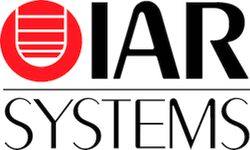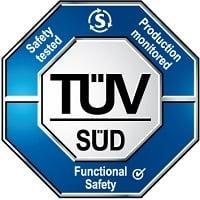Silicon IP Cores
IAR’s Safety-Certified Toolchain Supports EMSA5-FS Functional Safety Processor
The EMSA5-FS 32-bit Embedded RISC-V Functional Safety Processor is a smart choice for embedded systems that must get ISO 26262 certified. Now developing systems using the EMSA5-FS processor for functional safety certified applications is even easier as IAR is shipping a certified version of their Embedded Toolkit that supports EMSA5-FS.
IAR’s Embedded Toolkit for RISC, Functional Safety Edition, supports the entire RISC-V C/C++ code development, analysis, and debugging process. It has been certified by TÜV SÜD as being in compliance with a number of functional safety standards, including ISO 26262 which applies to automotive systems. This certification validates the software development process and your final software, dramatically reducing the work you need to do to get your final EMAS5-FS based product safety certified.
Read more in the following press release from our partner Fraunhofer IPMS, then contact us to discuss your own safety system requirements and how the EMSA5-FS might be your smartest choice in RISC-V processors.
PRESS RELEASE
Fraunhofer IPMS RISC-V processor core for functional safety supported by development tools from IAR Systems
With its latest release of development tools for RISC-V processors, Swedish software manufacturer IAR Systems offers support for the ISO 26262 ASIL-D ready certified RISC-V processor core "EMSA5-FS" of the Fraunhofer Institute for Photonic Microsystems IPMS. Users of the development toolchain thus benefit from simplified certification processes for functional safety, lower costs over the entire product lifecycle and maximum performance in RISC-V-based applications. The new EMSA5-FS processor core from Fraunhofer IPMS is marketed by partner CAST Inc.
Safety-relevant applications can be found everywhere in the world, in drive controls, automation technology, vehicle chassis and engine controls, as well as medical infusion pumps and pacemakers. Safety standards such as IEC 61508 are intended to guarantee that electronic systems meet the latest safety requirements. This also applies to the processors that are to be used in those systems. The choice of the development toolchain plays a crucial role and can directly influence the security integrity of those devices. Therefore it is beneficial to choose a certified software development process that has been externally and independently checked.
“Functional safety is important in many embedded systems and is becoming more and more relevant. After we were the first to bring to market a RISC-V processor core that can be certified according to ISO 26262, we are pleased to be able to offer developers the use of a pre-certified development tool for our IP core as well,” said Marcus Pietzsch, group leader for IP cores and ASICs at Fraunhofer IPMS. ”By using the pre-certified development tool from IAR Systems, companies can simplify their own certification process, increase the quality of their own design process, and save costs over the entire product life cycle.”
IAR Embedded Workbench® for RISC-V gives developers access to a full C / C ++ compiler and debugger toolchain. For companies that develop safety-critical applications, IAR Embedded Workbench for RISC-V is also available in a functional safety version: This is certified by TÜV SÜD in accordance with the relevant standards IEC 61508, ISO 26262, IEC 62304, EN 50128, EN 50657, IEC 60730, ISO 13849, IEC 62061, IEC 61511 and ISO 25119 and includes qualified tools over the entire product life cycle.
The EMSA5-FS processor IP core FS of Fraunhofer IPMS can be made available for any FPGA platform. Integration in customer-specific ASICs for any foundry technologies is also possible. Fraunhofer IPMS additionally provides services to expand the IP core with customer-specific modules. The commercially available processor core EMSA5-FS is marketed by the partner
About the Fraunhofer IPMS
The Fraunhofer Institute for Photonic Microsystems IPMS stands for applied research and development in the fields of intelligent industrial solutions, medical technology and improved quality of life. Our research focuses on miniaturized sensors and actuators, integrated circuits, wireless and wired data communication, and customized MEMS systems. Fraunhofer IPMS has years of experience in the drafting and design of IP cores for automotive communication and offers various IP cores for LIN, CAN2.0 / FD / XL, Ethernet TSN and RISC-V. It has more than 150 IP core users worldwide - the majority of them in the automotive, aerospace and manufacturing industries. The multidisciplinary IP design team at Fraunhofer IPMS with domain-specific expertise such as computer architectures, network structures and RTL design through to the implementation of electronic systems is also available as a competent development partner for application-specific adaptations of the IP cores and their integration into complex system architectures.
About CAST, Inc
CAST, Inc. develops and sells digital IP cores for ASICs and FPGAs. The product line includes compression algorithms, microcontrollers and processors, SoC security modules as well as various peripheral devices, interfaces and other IP cores.
About IAR Systems
Swedish software manufacturer IAR Systems delivers future-proof embedded systems software tools and services for the telecommunications, industrial automation and automotive industries. It thus enables companies worldwide to create today's products and tomorrow's innovations. Since 1983, IAR Systems' solutions have ensured quality, reliability and efficiency in the development of over one million embedded applications.
# # #



